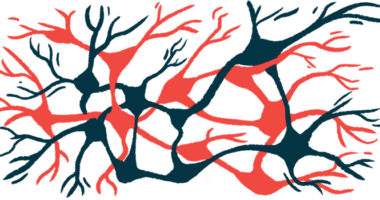NEK1 gene mutations found to drive ALS in new study
2 molecular pathways ID'd in study may be therapy targets

Mutations in the gene NEK1, a major genetic cause of amyotrophic lateral sclerosis (ALS), may work to drive the disease by destabilizing the structure of nerve fibers and disrupting the movement of molecules inside nerve cells, according to a new study.
The findings, which show for the first time how NEK1 gene mutations lead to ALS, illustrate “two problems in the neuron,” or nerve cell, researchers from Northwestern University, in Illinois, noted in a university press release.
“By illuminating these two pathways, we’re suggesting these are great therapeutic targets for the disease,” said Evangelos Kiskinis, PhD, a co-author of the study.
The study, “Loss of function of the ALS-associated NEK1 kinase disrupts microtubule homeostasis and nuclear import,” was published in Science Advances.
Understanding the impact of mutations in the NEK1 gene
Although the causes of ALS remain incompletely understood, genetic factors are known to play a role in some cases. Studies in recent years have suggested that mutations in the NEK1 gene might account for up to 2% of all ALS cases, making it one of the most common genes linked with the neurodegenerative disease.
The symptoms of ALS are driven by the progressive death and dysfunction of motor neurons, the specialized nerve cells responsible for controlling movement. While NEK1 gene mutations have been strongly linked with ALS, exactly how these mutations might cause motor neuron dysfunction has been unknown.
In this study, Northwestern scientists conducted a battery of experiments in cell models — including motor neuron models derived from ALS patients carrying NEK1 mutations — as well as tests in fruit flies to better understand how NEK1 affects motor neurons.
Their results showed that two major cellular processes get disrupted in motor neurons carrying a mutation in NEK1.
We are linking this new cause of ALS to other genetic causes in which the same process is disrupted.
First, NEK1 mutations lead to disruptions in the function of microtubules, which are tube-shaped molecules that form a critical component of the cytoskeleton (literally meaning “cell skeleton”). Just like the bones in the skeleton help to support the body, the microtubules in the cytoskeleton help to support the structure of a cell.
In motor neurons, the cytoskeleton is especially critical because it helps to support the long, wire-like axons, or nerve fibers, that these nerve cells use to connect with each other and with the rest of the body. But in motor neurons carrying NEK1 mutations, the microtubule cytoskeleton was not able to properly support the cells.
The second major pathway affected by NEK1 mutations was nuclear import. The nucleus is the central cellular compartment that houses DNA. Normally, proteins and other molecules are constantly being moved in and out of the nucleus as different genes are turned on or off. However, in cells with NEK1 mutations, this movement in and out of the nucleus was disrupted.
“This discovery is important because a major breakthrough in ALS research in the last few years was discovering that nuclear import is disrupted in other forms of genetic ALS.” Kiskinis said.
Certain cancer drugs, such as the chemotherapy paclitaxel, work to stabilize microtubules, which can stop cells from dividing. The researchers found that treating NEK1-mutant motor neurons with these drugs led to improvements in nuclear import — suggesting that both processes are connected.
“Our findings demonstrate that NEK1 can independently modulate [microtubule] dynamics and [nucleus-related] transport, while the effects of the [microtubule]-stabilizing drugs … highlight an association between these pathways,” the scientists concluded.
The researchers stressed that these cancer drugs are fairly toxic and can cause a lot of unpleasant side effects, so they might not be suitable for use in ALS. But still, these findings serve as a proof-of-principle for the idea that “stabilizing microtubules is a rational therapeutic approach in ALS,” Kiskinis said.
The scientists now are working to better understand exactly how NEK1 regulates these processes, with the hope that better understanding the mechanisms may open opportunities to develop new treatments.







